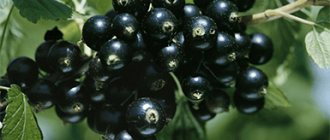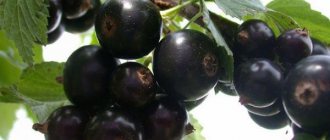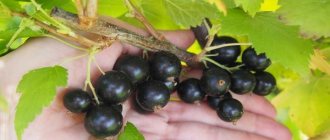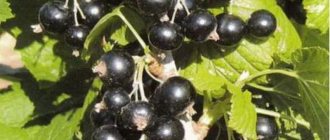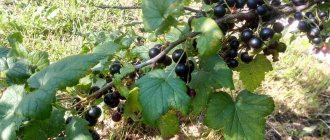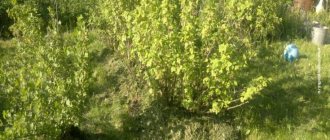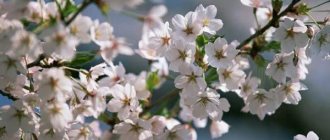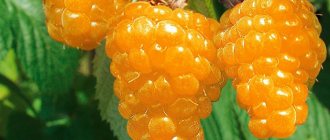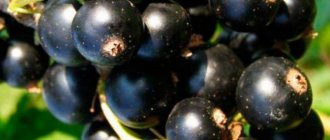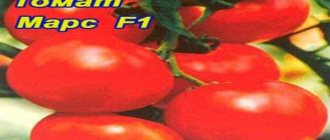Perhaps the pride of any gardener is a large number of fruit and berry crops on the site. Probably everyone has at least once tried to grow blackcurrants in their garden. Black currant of the Vologda variety is considered to be one of the best types. It is winter-hardy, resistant to many diseases and pests. And the taste and aroma of the fruits are simply incomparable! Let's talk about how to grow Vologda blackcurrant, how to care for it and how to achieve maximum yield!
The pride of domestic selection
Vologda is called exactly that - the pride of domestic breeders. This variety was obtained by crossing two varieties - Bredtorp and Kompaktnaya at the All-Russian Breeding and Technology Institute. The authors of black currant Vologda are A. N. Zarubin and V. M. Litvinova.
The year 1995 was marked by the fact that Vologda was included in the State Register of varieties approved for use in five regions of Russia - Northwestern, Volga-Vyatka, Central, Middle Volga and Far Eastern.
Black currant Vologda: description
This variety is distinguished by a dense spreading bush, the height of which reaches 1.5 m. Currant shoots are very strong and straight. The leaves are thick green and large. Each branch has ten-centimeter brushes, each of which has up to 14 fragrant berries! The weight of one fruit varies from 1.4 to 3 g. Their taste is sweet and sour. Ripe Vologda blackcurrant fruits do not fall off when overripe, but may burst. By the way, 100 grams of ripe berries contain about 140 mg of vitamin C! The fruits have a fairly high tasting score - 4.5 points on a five-point scale.
Description and characteristics of the variety
Titania grows as a tall, spreading shrub - 1.5 x 1.5 meters, dome-shaped. The shoots are straight. They differ from their counterparts in their powerful growth. This feature allows you to form a bush during the growing season.
Resistance to sub-zero temperatures and drought
The bushes tolerate low temperatures down to -34 degrees. In northern regions with snowy winters they can spend the winter without shelter.
Titania currants can withstand drought, but not for a long time. Therefore it requires watering.
Susceptibility to diseases and pests
Currants with strong immunity. With proper care, the plant is not susceptible to diseases: anthracnose, white spot, brown spot, powdery mildew.
In order to prevent pests in early spring, while the buds are sleeping, the bushes are spilled with boiling water. The procedure prevents spider mite attacks. To prevent boiling water from damaging the root system, wooden structures are laid. Currants are attacked by the glass butterfly, shoot gall midge, and fruit sawfly.
Productivity and fruiting
The berries ripen in several stages. The first collection is carried out in the first ten days of July and lasts for three weeks. The berries vary in size, weight varies from 1.3-4 grams. The taste of the pulp is sweet and sour.
Self-fertile currants from one bush yield 2-5 kilograms. On an industrial scale, 80 centners are collected from one hectare.
Applications of fruits
Titania berries are used for food in fresh or processed form. Currants preserve vitamins in frozen form. The fruits are thawed gradually so that all their properties are preserved. Place on the refrigerator shelf at a temperature of 4-5 degrees until completely defrosted.
Advantages of Vologda
The main advantage of this variety of currants is strong immunity. It allows Vologda to adapt to the climatic conditions of almost every region of the country. In addition, this shrub has good winter hardiness and tolerates temperatures down to -30 degrees! Another advantage of the black currant variety Vologda is its yield: from one bush you can collect at least 3-4 kg of wonderful fruits with a dessert taste. Berries are universal - you can simply eat them, or you can make various preparations and even wine. The variety is also resistant to bud mites and powdery mildew.
Advantages and disadvantages of culture
The main advantages of the plant include the following:
- Strong immunity. The culture adapts to any climate.
- Good resistance to frost. The plant easily tolerates even a strong drop in temperature.
- Undemanding to soil composition. The exception is rocky and marshy soil.
- Resistance to major diseases and pests.
- Excellent transportability. If harvested correctly, the fruits can be stored for a long time.
- Versatility. The berries can be eaten fresh or processed. They are boiled, frozen, canned. At the same time, the fruits retain maximum benefits.
See also
Step-by-step instructions and timing when you can replant currants
Read
The disadvantages of the variety include the non-simultaneous ripening period. As a result, the berries may crack when overripe. Also, a disadvantage of the plant can be its very spreading crown, which takes up a lot of space in the garden.
Selection of seedlings
Did you like the description of the black currant variety Vologda? Have you decided to plant it on your site? The choice of seedlings must be approached as responsibly as possible! It is worth giving preference to two-year-old plants. Annuals are also suitable, however, with one condition - the shoot must have a strong root system - 2-3 lignified roots and many thread-like roots. Please note that the length of the root system must be at least 15 cm. By the way, its color also matters: too dark a color indicates that the shoot has been overdried or frozen. It is better to choose a plant with yellow-brown roots.
A healthy plant has no signs of wilting; there should be no spots or bumps on the leaves and buds.
Advantages and disadvantages
Let's get acquainted with the main advantages and disadvantages of this variety of blackcurrant.
pros
- The shrub is distinguished by its unique winter hardiness, which allows it to be grown even in the most northern regions.
- Currant Vologda is a high-yielding crop.
- The plant is resistant to the most common diseases and pests of fruit crops: powdery mildew and bud mite.
- Along with its amazing unpretentiousness, the variety amazes with the dessert taste of the berries.
- The use of the crop is universal: the fruits are good both fresh and prepared.
Minuses
- The berries do not ripen at the same time, which makes harvesting difficult. This fact is of particular importance if the variety is grown on an industrial scale.
- Overripe fruits are prone to cracking, which impairs their keeping quality, marketability and transportability.
- As the bush grows, it becomes very spreading. Therefore, despite its small height, Vologda currants take up quite a lot of space on the site.
Choosing a place and time of landing
Black currant Vologda prefers lowlands. In this case, the humidity must be very high! It is important to choose a place in the sun, and the plant must be protected from the wind. By the way, gardeners often place Vologda along the fence.
The root system of this variety of currants does not have a dormant period, that is, over the winter the shrub will have time to take root, and by spring it will begin active growth! Therefore, it is worth planting Vologda seedlings at the end of September - October, about a month before the cold weather. If the deadlines are missed, black currants need to be planted at the very beginning of April, before the buds begin to bloom.
conclusions
We got acquainted with one of the most popular blackcurrant varieties in our country - Vologda. Below are the conclusions that can be drawn from the above information.
- The variety, like Rowada, is characterized by cold resistance, unpretentiousness and ease of cultivation.
- The plant is resistant to fungus and can grow and bear fruit even in high humidity.
- High yields of large, tasty berries will delight any gardener and farmer.
- The purpose of the fruit is universal, which makes it possible to widely use the crop.
So, this is a wonderful variety, suitable for both amateur and industrial cultivation.
Planting Vologda: step-by-step instructions
In order for the seedlings to take root, grow well and bring a large harvest, you need to follow certain rules for planting them in the soil.
- The place chosen for currants must be carefully dug up, debris and weeds removed. This shrub does not tolerate highly acidic soils, and therefore, if such a problem exists, it is necessary to add lime to the soil - half a kilogram per 1 sq. m. m.
- The depth of the planting hole should be about 40 cm and the diameter 60 cm.
- At the bottom of the prepared hole you need to pour 0.5 buckets of compost and the same amount of rotted manure. The latter can be replaced with fertilizer: 20 grams of potassium, 200 grams of superphosphate and 40 grams of phosphorus.
- Then the hole needs to be watered generously.
- The shoot must be installed in the hole at an angle of 45 degrees, and its root system must be straightened. This tilt will allow you to form a stronger bush.
- Gardeners recommend covering Vologda with soil and compacting it a little.
- You need to carefully pour three or four buckets of water under the planted bush.
- Immediately after planting, the bush should be pruned. If the root system is strong, you can cut it by a third, but if the roots are weaker, it’s better to cut it by half. This will allow you to get a good increase in the first year.
- To prevent the plant from drying out, you need to form a hole around the bush, which is mulched with dry grass, peat or sawdust.
Planting seedlings
You can grow the Vologda blackcurrant variety in any area, even with poor soil. The shrub does not require special care. However, the Vologda variety has three worst enemies: constant shade, waterlogging of the bed, and rocky soil.
They have been planting seedlings since October. If night frosts in the region begin earlier, the dates are shifted to mid-September. A peculiarity of black currant is the absence of a dormant period in the root system. The Vologda seedling manages to take root in the fall, take root, and quickly grow in the fall.
In spring, Vologda seedlings are planted from March to April. The earth should thaw and warm up a little. The buds on the seedlings may be swollen, but not bloomed. The site for black currants is chosen to be damp, but not swampy. Usually Vologda bushes are planted in lowlands, along fences, but the place should be illuminated by the sun.
When purchasing, it is better to give preference to two-year-old seedlings from Vologda. The choice is made according to the structure of the root system. A good seedling has at least two woody brown roots with many thin threads extending off. A dark color indicates hypothermia or drying out of the root system. Such a seedling will disappear or take a long time to take root. The age of two-year-old seedlings is determined by the length of the root system, which is at least 15 cm.
Advice! Before purchasing, the Vologda seedling is removed from the pot. If the soil ball is heavily entwined with roots, the currant will quickly take root.
Seedlings 35 cm long with one or two shoots are considered good. The skin of healthy twigs is not wrinkled, brown in color without spots or mechanical damage.
When planting, maintain the permissible distance between seedlings and other objects:
- Vologda bushes grow spreading and take up a lot of space. The minimum distance between seedlings is 1.5 m.
- You can make a hedge from black currants of the Vologda variety. If bushes are planted along a fence, then maintain a minimum distance of 1.5 m.
- On large plantations, black currants of the Vologda variety are planted in rows. Since the bushes grow strongly, the row spacing is maintained at about 2.5 m. The path is needed for caring for the bushes, watering and harvesting.
- Blackcurrant bushes can be alternated with fruit trees. The distance between young plantings is maintained at least 2 m.
The rules for planting seedlings of the Vologda variety are the same as for other varieties. The whole process can be divided into several points:
- The area for seedlings is dug up using the bayonet of a shovel. Remove weed roots, large stones and check acidity. If the indicator is too high, scatter 500 g of lime per 1 m2, dig it up and leave it for a couple of days.
- Under each bush, holes are dug 40 cm deep. The hole can be made square or round, with a diameter of 50 cm.
- Half a bucket of compost and old manure is poured into the hole. Organics can be replaced with a mineral complex containing potassium, phosphorus and other trace elements.
- The contents of the hole are filled with a bucket of water. After absorption at the bottom of the hole, a slide is created from the soil.
- The Vologda currant seedling is installed at an angle of 45°. The root system is spread over the mound and covered with earth. The soil around the seedling is compacted by hand. This must be done carefully so as not to damage the root system.
- After planting, pour 4 buckets of water into the hole. The Vologda seedling is cut exactly in half with pruning shears. For currants with strong roots, it is fashionable to cut off 1/3 of the top part. Pruning creates optimal conditions for strong growth.
- The area around the seedling is framed with an earthen embankment. The soil in the hole is covered with a thick layer of sawdust or peat mulch.
Swampy areas with close groundwater can also be used for growing black currants. No holes are dug in such areas. After digging up the soil and applying fertilizing, wide mounds 25 cm high are made. Currant seedlings are planted on them.
The video talks about planting black currants:
Description of shrub care
Good gardeners know that in order for a plant to grow strong and bear fruit well, it needs to be provided with timely care.
At the beginning of spring, black currant Vologda (the description of the variety is presented above) needs a hot shower. This is not difficult to do, and the benefits of this procedure are difficult to overestimate: all pests that overwintered on the bush die instantly. Add 250 g of baking soda to a bucket of water at a temperature of 70 degrees and water the plant thoroughly.
In general, currants have a special relationship with water. It is necessary for the development of the plant. One bush will require about 50 liters of water. Vologda rarely needs to be watered, but the water should flow 30-40 cm.
There are two methods of watering:
- Sprinkler irrigation is the most common irrigation option. But it has a serious drawback: the soil becomes compacted and absorbs moisture unevenly.
- A stone receiver is much more convenient. Organizing it is not difficult: you need to dig a hole 40 cm deep near the root system and fill it with crushed stone to the very top. After each watering, it is necessary to cover the hole with roofing material. This way the water gets to its “destination” faster.
The land near Vologda should be loosened and weeded from time to time. It is worth filling it with wood ash, and laying a low layer of compost on top. This will get rid of pests, weeds and retain moisture.
Features of care
Black currants require careful care immediately after planting so that the seedlings take root well and give rapid growth. If you continue to take care of adult bushes, the Vologda variety will reward you with a good harvest.
Currants need water as a source of moisture and as a preventative measure. In early spring, the bushes are given a hot shower. Heat a bucket of water to a temperature of 60–70°C, dissolve 250 g of baking soda, pour it into a watering can and irrigate the bush. The hot solution is safe for currants, but destroys overwintering pests on the branches.
Vologda currants love moisture, but frequent watering is not needed. There is enough dampness inside the soil. Watering can be increased more frequently in dry summers, when the intense heat causes cracks to appear on the ground. Under each currant bush, a deep depression is raked and up to 6 buckets of water are poured. The ground should get wet to a depth of 40 cm.
Mandatory watering is carried out in the following cases:
- in the spring before the buds open, if the weather is dry outside;
- during flowering and berry filling;
- dry summer;
- in the fall, when the currants shed their leaves.
Many gardeners resort to the simplest method of watering - sprinkling. Splashes of water wash away dust well from currant foliage, but greatly compact the soil. To ensure uniform and deep absorption of moisture, grooves 10 cm deep are cut on the soil surface in the expected root area.
A good effect is obtained from a stone well. Under a blackcurrant bush I dig a hole 40 cm deep and 25 cm wide. Large stones are thrown into the hole. During watering, water quickly passes through the stones and reaches the roots. The top of the stone well is covered with a piece of tin or roofing felt to prevent moisture evaporation.
Important! In winter, the stone well is covered with a thick layer of straw or other insulation to prevent the roots from freezing. Soil care includes loosening, weeding, adding wood ash and mulching
Vologda black currant responds well to fertilizing. Fertilizers are applied in the third year after planting the seedling:
Soil care includes loosening, weeding, adding wood ash and mulching. Vologda black currant responds well to fertilizing. Fertilizers are applied in the third year after planting the seedling:
- in the fall, after dropping the leaves, 3 kg of organic matter is added under the bush;
- Every year, mineral fertilizers are added along with organic matter: 30 g of nitrogen and phosphorus, as well as 15 g of potassium;
- while pouring berries under the bush, add potassium dissolved in water - 10 g and superphosphate - 40 g;
- in spring, during flowering and after harvesting, currants are fed with urea at the rate of 40 g per bush.
The first pruning of a young Vologda seedling is carried out immediately after planting. By autumn, five shoots about 45 cm long should grow. Next year there will be new growth. Old branches will give birth, and only strong ones will leave new shoots. All weak branches are cut off. In the third year, last year's shoots become fruit bearing. Old branches also bear fruit, but they are cut off in the fall. The further pruning cycle is repeated annually. An adult, normally formed bush should consist of 10–15 fruit branches.
The video talks about autumn pruning of currants:
Top dressing
The late variety of black currant Vologda requires fertilization. Insufficient nutrients will cause the fruits to become small and sour, and the yield will be significantly reduced. Fertilizers applied during planting will only last for a couple of years. Starting from the third year, Vologda needs to be fed. How to fertilize this plant?
- Mineral fertilizers should be applied every autumn. For 1 sq. m will need 30 g of phosphorus and nitrogen fertilizers, 15 g of potash.
- Organic fertilizers are also applied in the fall, immediately after leaf fall. For 1 sq. m will need 2-3 kg of feeding.
- Phosphate-potassium fertilizers are required immediately after currants bloom.
- Vologda needs nitrogen fertilizers three times a year - immediately after the snow melts, during flowering and immediately after picking berries.
Rules for pruning currants
The formation of shrubs and sanitary pruning are the most important measures in plant care. They must be carried out annually. You already know that the first pruning of Vologda variety blackcurrant is done immediately after planting the bush.
Starting from the third year, you need to remove old branches. It is quite simple to identify them - they are much darker and denser than young shoots. It is also important to control the number of new branches: there should be 13-15 of them on an adult bush.
When pruning old shoots, pay attention to the condition of the branches and buds - it is better to remove weak and fragile ones! By the way, you also need to cut out those shoots whose buds are swollen, because this is a sign of a bud mite.
Bottom line
Vologda is an unpretentious type of blackcurrant. But mistakes are made during the growing process:
- When the opening period of the plant is delayed, the buds rot, so the harvest may turn out to be poor. You can plant red Sugar currants next door.
- If pruning is done too late, the plant will have old and diseased branches that contribute to the spread of disease.
- Excessive feeding will lead to rapid growth of greens, but not berries.
- With constant watering, the root system will begin to rot and attract pathogenic bacteria.
If you listen to the advice on caring for the plant, you can provide yourself with a good harvest for more than one year.
Pests and diseases
If small brown spots appear on currant leaves, and then the leaf dries out and falls off, this may be a sign of anthracnose. Before the buds open, you need to treat the plant with Bordeaux mixture. For 10 liters of water you will need 100 grams of the composition.
Goblet rust is indicated by yellow pads that form on the ovaries, flowers and leaves of Vologda. In this case, you need to spray the bushes with Bordeaux mixture three times - during the blossoming of leaves, the formation of buds and immediately after flowering. If the lesion is very strong, 10 days after the last treatment you need to carry out another one.
A sign of a kidney mite is noticeable swelling of the kidneys. It is not possible to get rid of the pest using chemical compounds. Branches with affected buds should be cut off and burned. In case of severe infection, the entire bush must be destroyed.
Glassworm leaves noticeable damage on the leaves, flowers and berries of black currants. You can get rid of it after the buds open. To do this, you just need to spray Vologda with a solution of wormwood, onion peel or pine needles!
Main diseases of currant plants
Currants often suffer from the same diseases and pests as other garden bushes. Most often, the disease appears when the bush is not properly cared for.
The currant plant most often suffers from diseases such as:
Anthractosis - with this disease, convex brown spots appear on currant leaves. Over time, they increase in size and quickly join together, causing the leaves to simply dry out and fall off. The disease begins to spread from the bottom of the bush and gradually creeps higher.
Septoria - with this disease, round brown spots first appear on the leaf, gradually they lighten and turn white, and a brown border remains around the spot itself. Gradually, this disease can also affect the berry.
Goblet rust is a fungal disease. Orange peculiar “pads” appear on currant leaves, which contain a fungus that quickly develops.
Terry - with this disease, double purple flowers appear on the bush. Also, on young cuttings the leaves darken and become elongated. Gradually, all the foliage on the bush darkens, and it loses its aroma and stops bearing fruit.
Gray rot - this disease affects many plants. Initially, brown spots appear on the leaves, which gradually affect the wood. The bush begins to wither and gradually disappears altogether.
Columnar rust - This disease causes small yellow spots to appear on the leaves and growths to appear on the opposite side of the leaf. These growths contain fungal spores, which over time infect the entire bush, destroying it.
Necrosis of stems and branches - with this disease, the bark of the plant becomes too dry, gradually cracks and dries out. Accordingly, the bush dies very quickly.
Maranta Calathea Varshevich: description of the plant and rules of care at home
Striped mosaic - this disease spreads very often in the summer. At the same time, a peculiar yellow pattern appears around the veins on the leaf.
Powdery mildew - this disease affects many plants in gardens. A white coating appears on the leaves and fruits, it gradually moves to another stage and becomes a brown film, after which the fruits simply begin to rot.
Nectria necrosis - this disease most often appears in red and white currants. The branches of the bush simply dry out with this disease. This is a viral disease, which is not always possible to get rid of. This is all because 100% of the cure for it has not yet been invented.
And if you don’t start treating this disease in time, you can easily lose half of the bushes in one season. Therefore, it is best to carry out prevention and with proper care, the disease practically does not appear.
Also, for the prevention of this disease, the most effective drugs are: Bordeaux mixture, Copper sulfate, Nitrafen and Karbofos. Spraying with these solutions of these preparations should be carried out in early spring before flowering and in the fall after harvesting.
Harvest and storage
Black currant Vologda is a medium-late ripening variety. The flowering of the bush begins in the second half of May, but the fruits ripen usually at the end of July - August. Room temperature does not allow storing fruits for more than two days. Afterwards the berries rot. How to preserve the harvested crop?
There are several options: you can freeze the currants, dry them, grind them with sugar, or make jam from them. In all cases, Vologda currants will retain their beneficial substances.
You need to dry the fruits in the oven, the temperature should be 45 degrees. As soon as the berries become soft and limp, the temperature should be increased to 80 degrees. With the oven slightly open, drying the berries will take about three hours.
Frozen berries can be stored for several months. To do this, they need to be thoroughly washed, dried, scattered in a thin layer on a large dish and put in the freezer. After a couple of hours, you need to take out the berries, pour them into containers and put them back.
Taste and use
The round-oval black berries with thick skin are collected in weighty arched clusters, which often reach 8–10 cm in length. Usually the cluster consists of 4–7 berries, but sometimes their number reaches 14 pieces. The berries located closer to the base are larger - the weight of each can be 3.3 g. The detachment is dry. The pleasant sweet and sour taste and rich aroma of the berries are not lost during heat treatment. They make jam, preserves, jelly, compote and excellent marmalade. From one fruit-bearing bush you can harvest 3.4–4.5 kg of crop over 12-15 years. To prevent the branches from falling to the ground under the weight of the harvest, supports are placed under the branches, as in the photo, in the form of hoops.
Black currant variety Vologda: reviews from gardeners
Professionals and amateurs recommend this variety to those who do not want to spend a lot of time and effort on caring for the plant. Vologda survives in any conditions, and its immune system allows you to enjoy delicious fruits without much effort.
By the way, many gardeners admit that they plant Vologda on their site as an ornamental shrub. This has a certain meaning: the heavy black clusters shimmer in the sun, and the carved currant foliage is beautiful.
If you believe reviews about black currants, Vologda has good reproduction ability. Young shoots not only take root easily, but also do not harbor pests.
Average
In fact, the difference between the ripening periods of early and late currants is only 2–3 weeks, with rare exceptions. The important thing is that later varieties, including middle ones, ripen in hotter conditions. And this guarantees the berries a sweeter taste and a thicker skin.
The fruits of mid-season varieties acquire their taste in the first ten days of July, stay on the branches longer, and are better transported. The varieties are better suited for making jam, jam or wine.
Dubrovskaya
It is considered the sweetest berry among summer varieties. Dubrovskaya currants were obtained in 1988 and are planted in the Central and Volga-Vyatka regions.
Dubrovskaya is medium-sized, compact, even graceful, with a crown of medium density. Currants are sometimes used as an ornamental shrub, as they hold their shape well. The leaves are bright green, succulent, suitable for preservation, the flowers are small, light green.
The berries grow up to 2.3 g and are black in color. Experts rate the taste at 4.5 points, very intense, sweet and sour. The pulp is juicy and contains 200 mg of vitamin C. The fruits ripen by mid-July.
The variety is frost-resistant, self-pollinating, and is resistant to bud mites, which is important for mid-season varieties. Disadvantage: tendency to thicken and grow. Dubrovskaya needs periodic pruning
Read about pruning red and white currants here
Dubrovskaya needs periodic pruning. Read about pruning red and white currants here.
Dobrynya
The variety was obtained on the basis of the All-Russian Scientific Research Institute of A.I. Lyupin. At the same time, the Izyumnaya variety was crossed with a linear hybrid. Dobrynya was registered in 2004 and recommended for breeding in the southern regions and central Russia.
The bush is medium-sized, neat, not prone to thickening. The color of the bark on the shoots is unusual - with an olive-violet tint. The leaves are five-lobed, dark, and the flowers appear large and pale yellow in spring.
The berries ripen by mid-July. Their main distinguishing feature is their size; they grow up to 5–7 g. The skin is of medium density, purplish-black, glossy. The pulp is extremely juicy and sweet. On the scale, the taste of Dobrynya reaches 4.9 points.
The yield is average, up to 2.5 kg is harvested from 1 bush. With proper agricultural technology, you can increase the yield to 3.5 kg.
Dobrynya is resistant to powdery mildew, completely insensitive to heat and tolerates drought well. However, it also has one very significant drawback: currant seedlings take root with great difficulty due to poor rooting.
Izyumnaya
The variety was obtained at the All-Russian Scientific Research Institute of A.I. Lyupin. It got its name for its high sugar content - it is one of the sweetest varieties of blackcurrant. The “parents” of the Raisin were the Dove Seedling and a linear hybrid. The variety was included in the register in 2007. The crop is grown in the Central region.
Raisin currants are not tall, they do not grow higher than 1.5 m. The leaves are three-lobed, large, dark green. Blooms with small pale flowers. The berries ripen by mid-summer.
The berries are small - up to 3.3 g, collected in clusters of 7-11 pieces, round in shape, matte. Raisin currants contain a record amount of sugar - 10 parts by weight of the fruit. The fruits are very sweet, dessert-like, incomparable when eaten fresh or added to desserts.
The average currant yield is 2–3 kg per bush.
Raisin is difficult to propagate, since cuttings with dense bark take root poorly. The variety has average resistance to frost, but can withstand drought and heat excellently. Immune to kidney mite and anthracnose.
Perun
The variety was developed by A.I. Astakhov at the research institute back in the 90s. Perun was registered in 1995 and recommended for cultivation in the Central and Central Black Earth regions. The crop is self-fertile, but the presence of pollinating plants increases the yield.
Perun is medium-sized, but spreading and prone to thickening. The shoots are slightly curved, the leaves are three-lobed, dark green. The flowers are very large, red-violet.
The taste is wonderful, reaching 4.9 points on a five-point scale. Despite the thin skin, the berries are well transported. Productivity is average - maximum 3 kg per bush.
The berries reach 2 g, but sometimes grow up to 4 g. The shape is round, the color is deep black, the skin is glossy.
Perun is resistant to most diseases, but has average immunity to anthracnose, powdery mildew and bud mite. The bushes tolerate frosts down to -25 C. In colder winters, currants should be covered.
